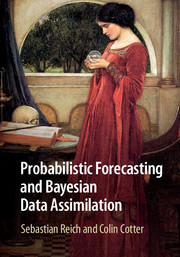On 30 April 2016 at 07:35, Martin SCHREIBER <M.Schreiber@exeter.ac.uk> wrote:
Dear Firedrakers,
I discussed yesterday with Andrew if Firedrake can be (ab)used to solve
PDEs with a non-traditional time stepping method (we call it REXI) and
he suggested me to drop an Email to this mailing list.
(@David/Colin: It's related to our parallelization-in-time work).
Let L be the linear operator of the SWE on the sphere in advective form
including the average height (by putting the perturbation into the
non-linear part). L also contains the longitude-varying Coriolis term,
but this shouldn't make a big difference here.
As one building block of the new time stepping method we like to solve
the SoEs given by
(\alpha - L) U = U0
with \alpha a complex shifted pole creating a non-singular SoE and U0
the DoFs to solve for.
I don't see any problem to write this in weak formulation as it is
required in Firedrake.
Now the following questions arise:
* Is Firedrake able to assemble and solve these system of equations with
the complex value \alpha?
It's only important to keep the real values of "U". The imaginary
values of U are not important if that's of any help.
* If not, is Firedrake still able to solve a reformulation which would
have a 6x6 linear operator instead of a 3x3 and 6 DoFs (3 pseudo DoFs)
per cell? (Basically reformulating the SoE with real values instead of
complex ones).
* Is there any Firedrake code publicly available with the GungHo FEM
dyn-core on the sphere with a C-grid?
* A question related to possible future work: Is Firedrake supporting
Semi-Lagrangian methods efficiently?
Cheers,
Martin
--
Dr. rer.-nat. Martin Schreiber
Lecturer, proleptic
Scientific and High-Performance Computing
University of Exeter
College of Engineering, Mathematics and Physical Sciences
Harrison Building, Room 319, North Park Road, Exeter, EX4 4QF
_______________________________________________
firedrake mailing list
firedrake@imperial.ac.uk
https://mailman.ic.ac.uk/mailman/listinfo/firedrake
